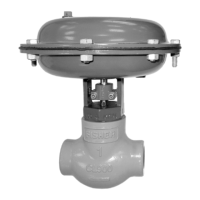Technical Guide
DAN-LIQ-TG-44-rev0813
November 2013
3
Section 1
AN INTRODUCTION TO BASIC HYDRAULICS
The study of hydraulics deals with the use and characteristics of liquids. Since the beginning of time, man has used fluids to ease
his burden. It is not hard to imagine a caveman floating down a river, astride a log with his wife, and towing his children and other
belongings aboard a second log with a rope made of twisted vines.
Earliest recorded history shows that devices such as pumps and water wheels were known in very ancient times. It was not,
however, until the 17th century that the branch of hydraulics with which we are to be concerned first came into use. Based upon a
principle discovered by the French scientist Pascal, it relates to the use of confined fluids in transmitting power, multiplying force
and modifying motions.
Pascal’s Law simply stated, says this:
Pressure applied on a confined fluid is transmitted undiminished in all directions, and acts with equal force on equal areas, and at
right angles to them.
This precept explains why a full glass bottle will break if a stopper is forced into the already full chamber. The liquid is practically
non-compressible and transmits the force applied at the stopper throughout the container (Figure 1-1). The result is an
exceedingly higher force on a larger area than the stopper. Thus, it is possible to break out the bottom by pushing on the stopper
with a moderate force.
Perhaps it was the very simplicity of Pascal’s Law that prevented men from realizing its tremendous potential for some two
centuries. Then, in the early stages of the industrial revolution, a British mechanic named Joseph Bramah utilized Pascal’s
discovery in developing a hydraulic press.
PRESSURE (FORCE PER UNIT AREA) IS TRANSMITTED THROUGHOUT A CONFINED FLUID
The bottle is lled with
a liquid, which is not
compressible.
A 10 pound force applied to a
stopper with a surface area of
one square in...
Results in 10 pounds of force
on every square in (pressure)
of the container wall.
If the bottom has an area of
20 square inches and each
square inch is pushed on by
10 pounds of force, the entire
bottom receives a 200 pound
push.
Figure 1-1

